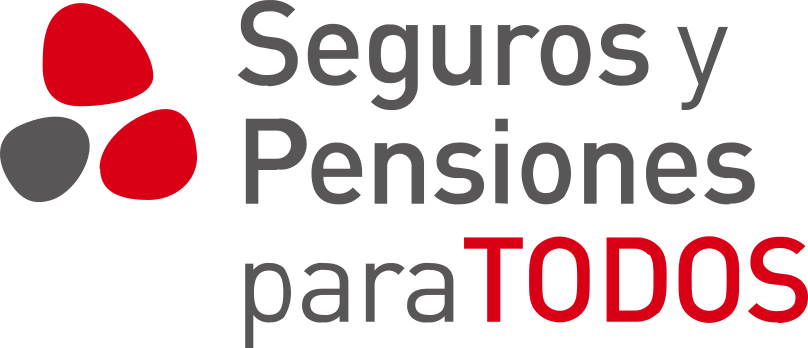Investment products according to your risk profile

Your profile as an investor is the sum of factors such as:
- your risk profile, or your attitude towards risk.
- your time horizon, or how long you will keep the investment, which is linked to your goals (the longer this is, the more risk you can take).
- your financial situation, which includes your savings capacity, assets, the stability of your income…
- Your financial knowledge and experience, which will help you decide how you behave with your investments (if you have invested before).
Depending on these parameters you will be a conservative, moderate or risky investor, although some people also talk about aggressive investors. For each profile there are a series of financial products that, due to their features, are better adapted to what each of them is supposed to be aiming for.
What measures the risk of an investment product?
There is no single parameter that serves to determine the risk involved in each product. The most common measure of risk is volatility, which measures price fluctuation or price changes, but this does not tell the whole story either.
In other words, knowing how much the value of an asset rises or falls on average over time is interesting, but it leaves out other important elements such as liquidity (when can you get your money back) and other values such as the maximum drop that you could experience in your investment, to give two examples.
What the National Securities Market Commission says
Cataloging products according to the risk they involve is so important that the Spanish National Securities Market Commission (CNMV) has its own system for doing this. This is the banking product risk indicator, also known as the CNMV traffic light (https://boe.es/boe/dias/2015/11/05/pdfs/BOE-A-2015-11932.pdf).

The system uses a scale from 1 to 6 to determine the risk involved in a financial product. This is the CNMV’s interpretation:
- Number 1. Products with almost no risk, either because of their particular structure or because they have additional guarantee systems. An example would be fixed-term deposits and interest-bearing accounts. Products that pose almost no risk to the customer. This includes bank fixed-term deposits and interest-bearing accounts.
- Number 2. 100% guaranteed products with a term of less than 3 years (mainly intended for fixed income issues).
- Number 3. Assets and products with a 100% return commitment and a term of between three and five years.
- Number 4. Assets and products for a term of between five and 10 years, with a commitment to return 100% of the capital.
- Number 5. Assets with the commitment to return 100% of the capital over 10 years or that guarantee 90% of the capital.
- Number 6. Reserved for products that do not ensure the recovery of the initial capital, such as shares, life insurance, and savings.
This scale is joined by that of investment funds, which have their own risk indicator drawn up by the CNMV. This indicator measures their risk from 1 to 7 and also includes warnings about their liquidity.
Investment products according to the risk they involve
The CNMV guide is a good starting point, but it does not reflect the reality of all the investments available to you. This is a list of products according to the risk they involve and for which investor profile they may be useful.
- Deposits and current and interest-bearing accounts. These are savings products rather than investment products. The money is safe and backed by the Deposit Guarantee Fund, which covers up to 100,000 euros per entity and participant.
- Guaranteed products. As the CNMV points out, the longer the term of the investment, the less secure it is. The reason is that it is less difficult to know what might be happening in three years than in 10 years. You should also bear in mind the fact that the longer the term, the more profitability they will offer, although this is not the goal of a guaranteed product.
- Structured deposits. These are still deposits and your money is safe. The difference between this product and a traditional fixed term deposit is that you do not know the return (it is not fixed) and that they may not be 100% liquid.
- Savings insurance, mainly PIAS and SIALP. There is savings insurance for all tastes, just as there are mutual funds for all risk profiles. However, savings insurance appears so soon because it can be structured as a very limited risk product, if that’s what you want. From that point on, it can also be a higher-risk vehicle, like a mutual fund portfolio or a unit-linked portfolio (which, incidentally, is also a form of insurance).
- Fixed income and short-term debt. First through government debt issuance in the form of Treasury Bonds and Treasury Bills, and then through short-term corporate debt issuance. It can be invested directly or through monetary funds.
- Medium and long-term fixed income. As you have already seen, there is a directly proportional relationship between the term of the debt issuance and the perceived risk.
- Investment funds, pension plans, insured pension plans (PPAs), and Unit Linked plans. These all invest in portfolios of assets, so you can choose the level of risk you take. There are conservative funds and others that are riskier, and the same goes for Unit Linked and pension plans.
- Direct investment in the stock market. Stock market investment is a step above mutual funds for the simple reason that the former are professionally managed. In addition, it is easier to diversify on your own with funds than with stocks.
- Cryptocurrencies and derivative products. Cryptocurrencies are a high-risk asset because of their complexity and high volatility. The same goes for CFDs, binary shares and other derivative financial products.
And housing? Or gold? Both are ways to protect yourself against inflation, but they are not financial products as such, which is why they do not appear on the list. In fact, investing in housing tends to be seen as a safe and risk-free investment, although it has its own dangers, especially when the investment involves a mortgage.
Which products are suitable for each risk profile?
Because of their versatility, mutual funds, pension plans or Unit Linked products can be used for different risk profiles. In fact, even shares can be adapted to more than one investor profile depending on the investment strategy they follow.
After all, trading (buying and selling a stock in the short term, even on the same day) is not the same as a buy-and-hold strategy or investing in dividends, to give three examples.
Something similar happens with a deposit, which is a very safe product and also not very profitable and, nevertheless, can suit the portfolio of an aggressive investor in terms of the money they keep liquid.
The key to choosing where to invest has more to do with your goals and your overall strategy than with the risk level of the product.


